HOME IMPROVEMENT Guide
Inside:
Defending Against Fires
OCFA Offers Ways Residents Can Protect Their Homes Against Destructive Blazes

+
Local Interior Designers Forecast Earthy Tones as Standout Fall Trends

danapointtimes.com Dana Point Times August 25-31, 2023 Page 1
Turf Removal
$2 per square foot for synthetic turf only (max of 1,000 SF)
Pre-approval needed
Rebates start at $180 Save 40-50 gallons per day/home

Drip
Rebates start at $0.50 per square foot Save 50 gallons per day




$150 per qualifying toilet
Pre-approval needed Save 22 gallons per day
Rebates start at $85 Save 15 gallons per day
danapointtimes.com Dana Point Times August 25-31, 2023 Page 2
Smart Sprinkler Timers
Irrigation
High-Efficiency Toilets Clothes Washers Scanfor Rebate Information (949) 499-4555 ext. 3126 @SOUTHCOASTWATER UPGRADE YOUR HOME WITH WATER-SAVING TOOLS AND SAVE MONEY WITH REBATES. DON'T LET YOUR MONEY DRIP AWAY! Save Water Save money! SEE ALL REBATES AT SCWD.ORG/REBATES
Premium
Keeping Pests Away from Your Home Bugging Out
By Clara Helm
With no shortage of insects in the warmer months, pest prevention can be challenging. Fortunately, there are a variety of solutions for homeowners.
Sprays & Devices
Bug zappers are usually not recommended by experts, as they indiscriminately kill bugs that come near them.
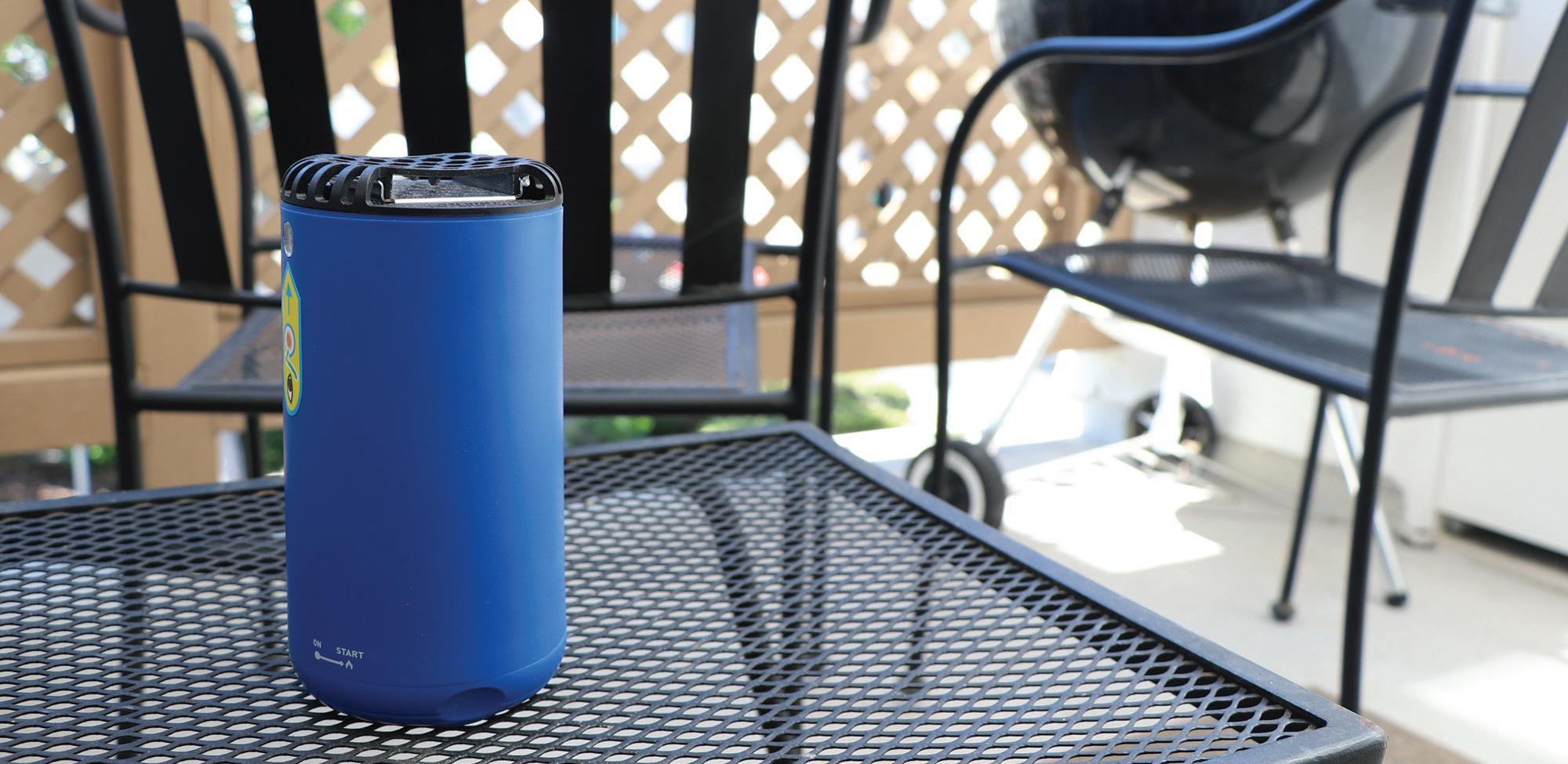
Many instead suggest bug-repellent spray, which does not kill bugs but simply notifies them that you are not their meal. The most effective bug repellents are those that contain a 20% concentration of picaridin.
For those who do not want to bother with spraying bug repellent directly on their body, spatial repellent is another option.
Spatial repellent in a device that releases a chemical spray, with transfluthrin as its active ingredient, covers not just one person but an entire area.
Bug nets are another great option for those who want to keep bugs away from a distance. The biggest factor that needs to be considered with nets is mesh material and size.
A higher mesh size, with smaller holes, is most effective at keeping out tinier pests, but it will lead to less airflow.
According to experts, the 18-openings-per-inch by 16-openings-per-inch nets are effective for larger insects such as mosquitoes, while 20-openings-per-inch by 20-openings-per-inch nets will keep out the smallest pests such as sand flies.
To fully combat insects, a spatial repellent and a bug net would be best used in combination with each other.
Cleaning & Home Fixes
For simpler fixes without devices, homeowners can also employ housekeeping tips to reduce the number of pests.
Insects are most attracted to sources that provide them with nourishment; therefore, one of the most emphasized housekeeping tips is to eliminate any left-out water and food in your home. Other than food sources, homeowners should clean their homes on a regular basis, paying most attention to nooks and crannies where dirt may build up unsuspectingly.
The next strategy is to close off pest entry points as a preventative measure. This involves repairing torn screens and keeping weather stripping up to date.
Going All-Natural
For the homeowner who would like natural, chemical-free solutions, there are plenty of options.
One of those options is putting pest-preventing plants in and outside your house.
One of those plants is marigold, a species that contains a natural insecticide that repels many types of bugs including mosquitoes. Rosemary, mint, basil and citronella can also be planted to keep away unwanted insects.
For another all-natural solution, vinegar is one of the best. Using its potent smell as a repellent, a 50/50 solution of white vinegar and water sprayed around the home targets common insects such as ants, spiders and mosquitoes.
An apple cider vinegar and water mixture repels the same insects as white vinegar, but you can also mix it with soap to repel fruit flies.
Running a household fan can also be an effective, non-toxic way to ward off pests, as they reduce the number of insects landing on a person’s skin. Experts recommend keeping the airflow low, preferably below table level, as insects such as mosquitoes usually bite the lower extremities.
After a summer enjoying all the away-from-home recreation that South Orange County can provide, it’s time to turn inward as we approach fall and winter and pull out those projects and new bits of design to make your home a bit cozier in the cooler seasons.

Look no further for inspiration than in our Home Improvement Guide.
Energy efficiency has been a focus for many homeowners to help lower the bills, and we investigate one of those oft-suggested solutions in tankless water heaters. We talk to local plumbers to see if these devices actually provide their advertised advantages.
Were you feeling the heat this summer? We examine how to help you stay cool without air conditioning, as many beachside units have to figure out.
A hot summer also means drier conditions and ever-present fire danger. If you’re looking to make certain your home is protected, check
out tips from the Orange County Fire Authority on how you can landscape your yard with fire prevention methods.
Home improvement isn’t just about safety and practicality. It’s also about curb appeal. Look inside for tips on gardening and landscaping, as well as all the latest fall décor to stay on top of the trends.
Make your home welcoming to visitors, but maybe not the multi-legged and winged kind. Read up on how to keep bugs and other crawlers out of your home and plants.
Write up that to-do list and start those projects with the help of this year’s Home Improvement Guide.

danapointtimes.com Dana Point Times August 25-31, 2023 Page 3
TO THE
Welcome NEW PATIENT SPECIAL FREE WHITENING MENTION THIS AD • INVISALIGN • VENEERS • BRIDGES • CROWNS • REPLACE MERCURY FILLINGS
Home Improvement Guide
From sprays and devices to all natural solutions, homeowners can find methods to keep pests away from their homes.
Photo: Shawn Raymundo
How to Protect Your Home Against Fires Defensive Space
By Breeana Greenberg
As Orange County Fire Authority (OCFA) sees brush fires occurring throughout the year, the agency offers a list of actions residents can take to protect their homes against destructive blazes.
Each step homeowners take to make their home more defensible in the case of brush fires helps firefighters to focus their efforts containing the wildfire rather than needing to put out home fires.
OCFA Public Information Officer Greg Barta shared ways residents can make their homes more defensible.
“People used to think that fire season was kind of the September-to-November time, and what we’ve found now is really, fire season’s year-round here in Southern California,” Barta said. “There’s brush fires occurring literally throughout the year and to varying degrees of devastation.”
Because devastating fires can occur at any point in the year, Barta added that it’s important for homeowners to be prepared.
“The worst time to try and be prepared for a fire is when it’s already occurring,” Barta said. “So, if you take the steps ahead of time, and if you’re reading this article, now is a great time to take those steps.”
Making one’s home as defensible as possible “gives your home the best chance of surviving a fire, and it provides us an aid in fighting the fire,” Barta said.
Defensible space should reach at least 100 feet from a house or to the property line, Barta explained.
“The guidelines that we give for vegetation management within 100 feet of your home are—I think the most obvious one is to remove all dead and dying plants,” Barta said. “Then we recommend removal of vegetation found on the undesirable plants list.”
OCFA offers a list of undesirable plant species within its Vegetation Management Maintenance Guidelines for property owners, found at ocfa.org. Plants that have made it to the undesirable species list are ones that are prone to drying out rapidly, are susceptible to drought conditions or ignite quickly, Barta explained.
“We recommend removing any plants that are on that undesirable plant list and replacing them using drought-tolerant, fire-resistant plants,” Barta said.
Additionally, OCFA recommends separating plants to reduce the likelihood of a fire spreading.
“Basically, you want to make it so the trees aren’t touching, so that if one did catch fire, it’s not going to parlay that into the next tree, the next tree, so on and so forth, making its way to your home,” Barta said.
Barta added that it’s important to remove dry leaves, twigs, pine needles and other debris from one’s yard, roof or rain gutters, which can be “another avenue for embers to settle and then catch on fire.”
“The one good thing to do on the rain gutters is to install gutter guards and then make sure to just make it a part of the homeowner’s annual maintenance to remove combustible debris on a regular basis,” Barta said.
Residents can also ensure that their roofs, decks and balconies are made of ember-resistant materials to prevent them from catching fire.
“Your roof, you want to make sure it’s made of an ember-resistant material and the gaps are filled with ignition-resistant materials, so basically no loose roof flashing,” Barta said. “You want to avoid, if possible, those old shake, shingle wooden roofs; very susceptible to embers getting caught in there and causing a fire.”
Barta added that it’s important to install a 1/8-inch metal mesh screen over any vents going into attic space.
“Embers can be cast, literally, miles in front of the fire and sometimes those embers, they’ll blow inside the vents within the roof, and then the roof catches fire and the entire home is lost,” Barta said. “It is moderately preventable if you take the simple step of putting the metal mesh screen over it.”
Another way to reduce the likelihood of one’s home being impacted by a vegetation fire is through hardscaping and eliminating the use of combustible mulch within five feet of one’s home, Barta said.
“We do say it’s not necessary to remove all the vegetation around your home; obviously, we want the home to look nice, be aesthetically pleasing, but creating defensible space will give us a better chance of keeping a wildfire from spreading to your home,” Barta said.
Barta added that dead and dying vegetation around a home can make a fire move more rapidly and burn more intensely, “which makes it much more difficult for us to fight.”
“So, if your home is defensible, it makes it easier for us to defend your home, it makes your home less likely to catch fire, and all those culminate for us to have an easier job battling the fire,” Barta said.
“If your home is not on fire,” he added, “we can defend it. If your home is on fire, we have to try and put it out, and now that focuses our efforts on that which takes away some of our efforts from putting the actual brush fire out itself.”
Since Assembly Bill 38 went into effect in July 2021, those selling property in high- or veryhigh fire severity zones to provide documentation that the property is in compliance with wildfire protection measures.
Portions of Dana Point, San Clemente and San Juan Capistrano are in high- or very-high hazard severity zones. OCFA offers defensible space inspections for property sales in such zones. More information on fire safety tips can be found at ocfa.org/safetyprograms/readysetgo.aspx.
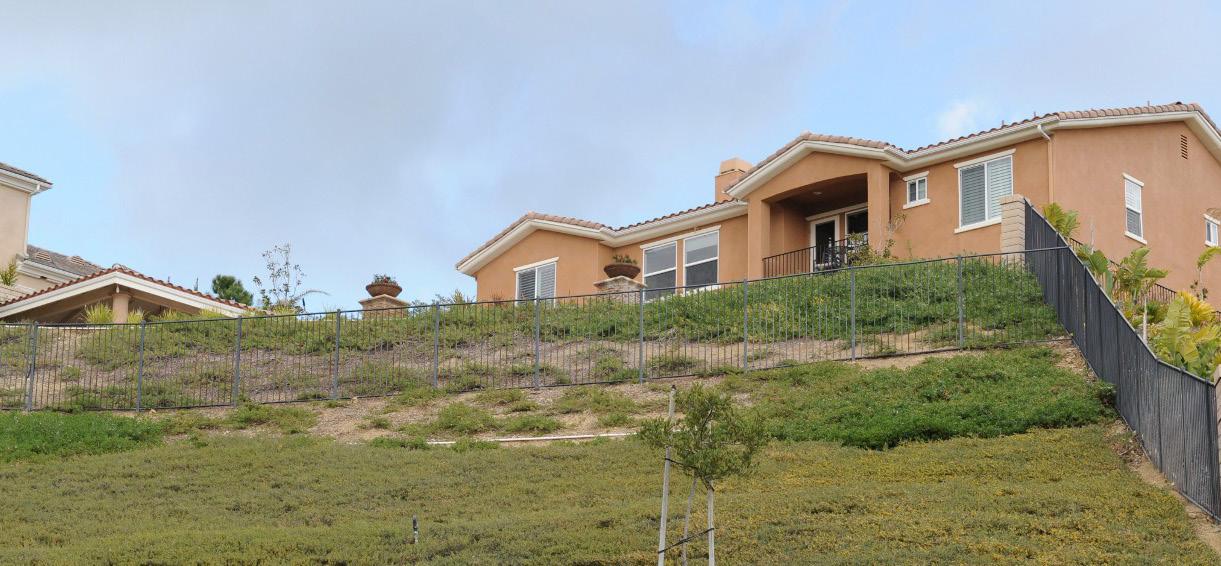
danapointtimes.com Dana Point Times August 25-31, 2023 Page 4
Orange County Fire Authority provides a list of actions residents can take to protect their homes against destructive blazes including defensible landscape management. Photo: Courtesy of Orange County Fire Authority
Create Wellness In Your Home

With today’s focus on healthy eating, exercising, getting enough sleep, and mastering stress it is no coincidence that we are increasingly becoming more aware of our surroundings. The environment in which we live plays a large role in our overall well-being.
Wellness focused design in your home can greatly influence a person’s physical health as well as their emotional state. The goal is to focus on creating an environment that nourishes your body and mind.
Incorporating the appropriate tools into your home to help you become a healthier and happier human being looks a little different for each person. Depending on your needs and goals it may be a de-cluttered home or an updated kitchen. It could also incorporate lighting control and air quality or adding natural elements such as plants.


Circadian Rhythm, also known as your internal body clock, is a 24-hour cycle that dictates when you are most alert and when you are ready for sleep. A healthy circadian rhythm can gain you a deeper night of sleep and help you be more alert in the daytime. In your home it can be beneficial to open the blinds and turn on lights as soon as you wake up. As dusk approaches adjust light exposure and dim the lights as you get close to bedtime. It is also a good idea to use blackout shades and create a sleep sanctuary in your bedroom. Similar bedtimes and wake times are important as well as eating at consistent times in the day. Raising your body temperature with cardio or a sauna each day can also be helpful. Social interaction is important too!
We have become aware of the importance of outdoor air quality in smog filled cities, but we take for granted the quality of indoor environments. If air quality in a home leads to stuffiness or other discomforts it can cause respiratory symptoms, headaches and more. The obvious solution is a good indoor air filter but the not as obvious is opening your windows slightly each day to generate new air. The materials used in construction and when choosing furniture are extremely important too. Choose paint with no VOCs, flooring and furniture with natural and sustainably sourced hard wood and rugs and fabrics with natural fibers to name a few. You can also add green walls and plants to pull dust out of the air and add oxygen.
Which leads me to the term biophilia. Biophilia was popularized by psychoanalyst Erich Fromm in the 1960’s and suggests that humans possess an innate tendency to seek a connection with nature and other forms of life. What better way to do this than in the home! A home you enjoy entertaining in helps to connect you with other people.
There are many ways to add nature into your home, by using earthy colors, natural sunlight, adding plants, and art or images of nature to create a feeling of wellbeing.
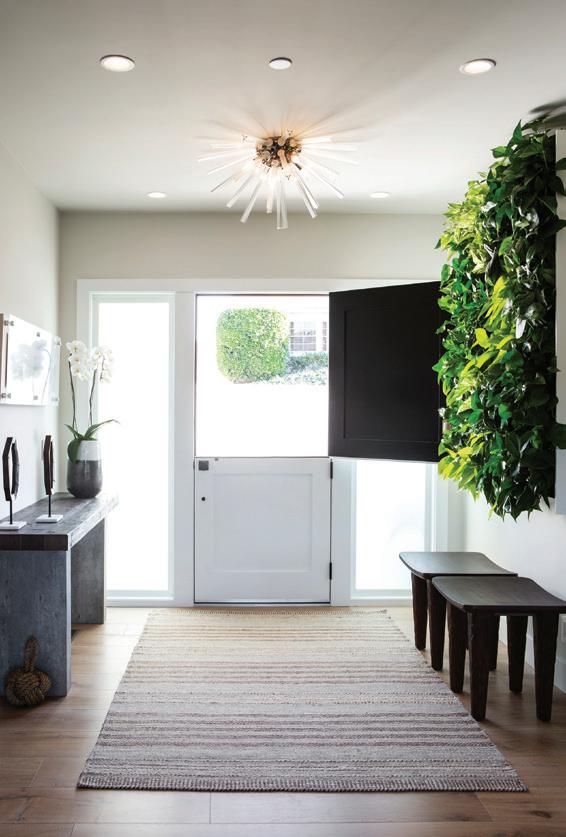
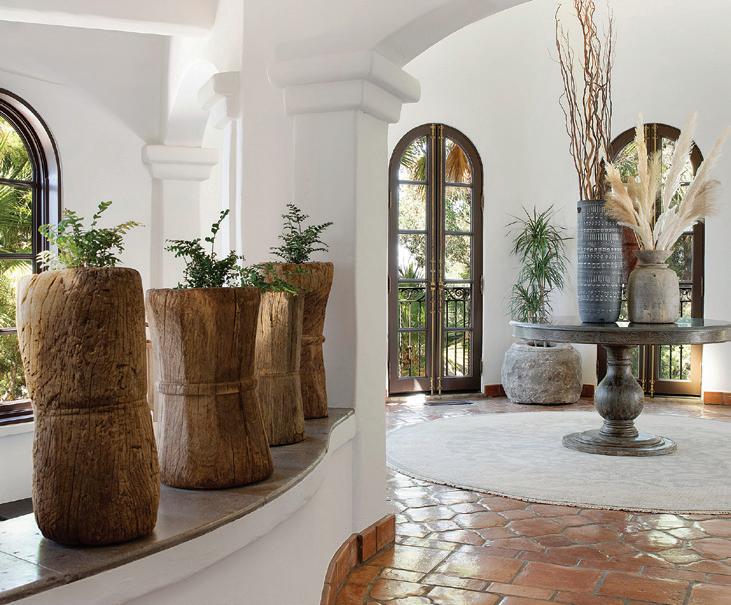
Home design that is focused on improving human well-being strives to create a healthy environment. It is the intersection of Interior design and architecture, psychology, and neuroscience. Research has shown the positive effects that design can have on physical and mental health.

danapointtimes.com Dana Point Times August 25-31, 2023 Page 5 LOCAL KNOWLEDGE - SPECIAL ADVERTISING SECTION
302 N. El Camino Real Suite 107, San Clemente, Ca. 92672 949.361.0053 tamra@conceptdesignoc.com | www.conceptdesignoc.com
HELOC
Fixed! Get A Fixed Rate Home Equity Line of Credit in 5 days! CA DRE Broker #02103128 NMLS #1895363 CALL 949-503-6040 TEXT 949-385-3007 Online approval without affecting your credit score. Credit lines from 50k - 400k available. No in-person appraisal required.
Our
is
Left Out in the Cold (Competition Is Heating Up)
A Homeowners Guide to Tankless Water Heaters
By Clara Helm
t is a common occurrence when an hourlong shower and simultaneously running of the dishwasher create a poor victim of lukewarm, if not cold, water.
Tankless water heaters have solved some on-demand elements that traditional tank water heaters have left to be desired. For homeowners to make a fitting choice for their water heater needs, it is necessary to understand both the flaws and benefits of the most common systems.
How They Operate
For much of the 20th century, storage tank water heaters made up most of the market. This traditional form of water heater uses a heating mechanism (using electricity, natural gas, solar, etc.) at the bottom of the large metal cylinder to heat the water.
Cold water enters through the dip tube and is sent to the bottom of the tank to be heated. The hot water then rises and exits through the heat-out pipe.
In other words, water is constantly being kept hot and ready to use.
It was not until the mid-1990s that tankless water heaters were able to compete with tank models because of their increase in efficiency. Their rise in popularity has been due to their ability to create water on demand, using no energy when hot water is not needed, rather than constant heating.
A heat exchanger is the source of this on-demand hot water and is activated by the incoming flow of water. Electrical resistance heating coils (or a gas burner) heat the water when it enters the unit.
A common falsehood about tankless water heaters is that they provide “instant” hot water. Both Jeff Shaffer, owner of Shaffer Plumbing, and George Spraker, owner of Crown Plumbing, clarified that it is more accurately described as “endless” hot water.
“This means that once hot water gets your fixture, you can take a very long shower as long as you want, without running out like you would if you had a water heater,” said Spraker.
There is a lag in the time it takes for that water to get to the faucet because of it taking time for the cold water that is static in the lines to push through. But this amount of time varies depending on factors such as house size and type of tankless heater.
Which Type and Size to Buy
There are two types of tankless water heaters: point-of-use heaters and whole-house heaters. Depending on a customer’s need, point-of-use heaters work well for one or two outlets such as a sink, and they have less lag time. But if there is a larger need, whole house heaters would be needed, which is more common among their customers, Shaffer and Spraker both noted.
According to experts, when buying a tankless water heater, two factors need to be considered for its size: flow rate and temperature rise.
Flow rate is the amount of water your household may need at a time. To figure out demand, one should consider how many hot water devices you would use at a time and add up their flow rate or gallons per minute.
Temperature-rise refers to the difference between near groundwater temperature and desired water temperature that you would like in your house.
Given that most households desire their hot water to be around 120 degrees Fahrenheit, the customer of a tankless water heater would have to request a water heater that produces a certain temperature-rise based on groundwater temperature.
This temperature-rise factor can be of concern for those living in colder climates. If an area’s groundwater is colder than average, making the water take longer to heat, the water heater cannot provide as much hot water per minute.
While this is not much of a concern in Southern California, Spraker clarified this might be an issue in colder parts of California, where Delta T, the difference between two measured temperatures, is higher.
“Say, the groundwater is 50 degrees and you want to get it to 120 degrees,” said Spraker. “Between 50 and 120, that’s 70 degrees. That’s a large Delta T. Whereas, where we are, the groundwater might be 70, maybe 65, which means a smaller Delta T.”
But many experts agree that with the right size of the heater, a cold climate will not be an issue if the size of the heater fits your household’s hot water demands. If consumers are still worried, others recommend using a gas-heated tankless water heater, as it produces higher flow rates and heats the water quicker.
“You’ve got to be sure (the heater) is sized correctly, because in the wintertime, it works harder to create more water to keep up with the demand,” said Shaffer.
For the Environmental Homeowner
For homeowners invested in reducing their environmental footprint, a switch to a tankless water heater could contribute to a smaller environmental impact caused by water heating.
In a study of water heaters in Northern and Southern California by Lawerence Berkley National
Laboratory, tankless water heaters were found to reduce annual energy use by 16% compared to tank water heaters, and reduce global warming emissions by 18%.
This reduction in emissions and energy use has to do with the efficiency of tankless water heaters, as there is no standby heat loss and excessive energy consumption.
Not only would homeowners be aiding in a sustainable future, but they might also be able to gain economic benefits from the switch.
California now offers rebates and tax credits for homeowners seeking to buy tankless water heaters. Buyers of a tankless water heater can receive rebates of up to $1,000 if their model is Energy Star Certified and has a Uniform Energy Factor rating of 0.82 and above.
Buying qualifying models can also mean homeowners can get $600 back on their taxes.
What’s Holding Customers Back?
While prices vary depending on size, tankless water heaters tend to be more expensive than a traditional tank system, costing an average of $800 versus a tank water heater’s average of $600.
Electric-powered tankless heaters, the cheaper option, cost up to $800, and a gas-powered heater can cost more than $2,000. Point-of-use heaters cost less at around $250, with a pack of them costing up to $775.
Tankless water heaters also come with a higher installation cost, both the water heater and installation cost adding up to $3,500.
“For the first installation, it’s usually about twice as much cost (of a tank installation),” said Shaffer. This high fee for installation, noted Shaffer, is because most houses are being built for a tank water heater, taking extra work to transfer from a tank to a tankless system.
Tankless water heaters also need to be serviced every couple of years, according to both Spraker and Shaffer, which is especially important because of California’s high levels of hard water.
“The heat exchangers tend to build up with hard water deposits that need to be flushed out, whereas the water heater does not have that issue,” said Spraker.
When it comes to natural disasters and emergency situations, both plumbing experts recommend tank water heaters because of their storage of water.
Recalling a situation a couple of years ago in Southern California that left residents without electricity, Shaffer saw the benefit of having a tank water heater.
“I had a tankless water heater (during the blackout), and I could not have a hot shower. With a tank water heater, they had gas, they had hot water,” said Shaffer. “If there was a shortage of water, you also have water in your tank.”
Spraker agreed; when infrastructure failures occur, tank water heaters will come in handy.
“The first thing to go when we have a severe earthquake is the infrastructure of the city,” said Spraker. “Even if the water is off, it’s stored in (the tank), which you can live off until the infrastructure is back in place. With a tankless, you don’t have that option.”
If homeowners choose a tankless option, Spraker emphasized the importance of having a backup supply of water in the house.
What are the Benefits?
The higher fee for a tankless water heater will pay off both in longevity and energy costs. Tankless water heaters will last most homeowners more than 20 years, compared to the traditional 10-15 years. On average, Californians spend $124 per month on their energy bill and $63 per month on their natural gas bill.
To offset its higher price tag, a tankless water heater will reduce homeowners’ electricity or natural gas bill. According to the Environmental Protection Agency, tankless will use 34% less energy than a storage tank water heater if 41 gallons or less of hot water is used daily.
“Now, a couple of years ago, gas was cheap,” said Shaffer. “Last year, the gas really went up in price. So, people might notice that savings now.”
Therefore, it might take homeowners a year or two to see the benefits of their tankless system.
“Just like if someone wanted to buy a Tesla car, it’s gonna take a couple of years to save on gas for that extra cost,” said Spraker. “It’s kind of the same way with tankless; it’s gonna take a couple of years for that to pay for itself, but it eventually will.”
Other than its hot water efficiency and long-term savings, homeowners also factor in the space they save in their garages and other areas when choosing to install a compact tankless water heater. To veterans of the plumbing industry, both systems have upsides depending on the customer’s priorities.
“The biggest pro (of tankless) is the constant flow of hot water and saving space,” said Shaffer. “The cons are the cost and the maintenance.”
“Biggest pros for the tankless, I think, are the rebates, the energy savings, and then also the endless amounts of hot water that you get once it’s there,” said Spraker. “But the benefit of a (tank) water heater is that it costs less and the storage for emergency needs.”
danapointtimes.com Dana Point Times August 25-31, 2023 Page 6
I
Forecast Earthy Tones as Standout Fall Trends Local Interior Designers
By C. Jayden Smith
While the weather in sunny Southern California never appears to drastically shift as the calendar flips from August to September, marking the beginning of the fall, that doesn’t mean your residence can’t undergo its own alterations.
Interior design is among the fields that sees a fair share of trends that evolve from season to season, meaning that this fall will feature a slate of changes as to what’s popular in the industry.
Local designers Jessica Belteau, who owns a studio of her own namesake, and Kathy Miller of Driftwood Designs talked this month about what they foresee will find a way into spaces in South Orange County and beyond.
Belteau is relatively new in the field, as she started doing small spaces for clients roughly three years ago, after her Instagram documenting the renovation of her own home gained a following. Despite her busy schedule, she makes an effort to stay connected with the industry and network by attending webinars and participating in trade organizations.
“I’ll also be attending a couple of shows coming up in the fall, to get together with vendors and get a better understanding of what’s trending for the upcoming year,” said Belteau.
Based on what’s she seen so far, Belteau believes rich, chocolate browns and muted greens will populate many living rooms, kitchens and other spaces in the next few months.
Brown, especially, will make a resurgence, as she’s seeing the color used in art, décor, furniture and finishes, such as wood.
“I just feel like brown is having its comeback, not just in fabrics and textiles, but even in finishing materials,” said Belteau. “We’re using it in renovations—customers are asking for brown countertops, which (has) never been a request in the past.”
Statement glassware, such as amber mugs or glass mugs with a pop of color, will also be prevalent in the fall, Belteau added.
She also mentioned lamps with pleated or rattan shades and the practice of layering accessories on bedsheets and shelving.
“Plaid is always during the fall, (and) I’ve been seeing vendors incorporating a lot of plaid in their pillow covers, rugs, and furniture fabric for chairs, sofas, and ottomans,” Belteau continued.
Kathy Miller, who designs spaces throughout the home, said trends do factor into her designs, but she still tries to have an overall neutral space that reflects Driftwood Designs’ signature coastal modern look.
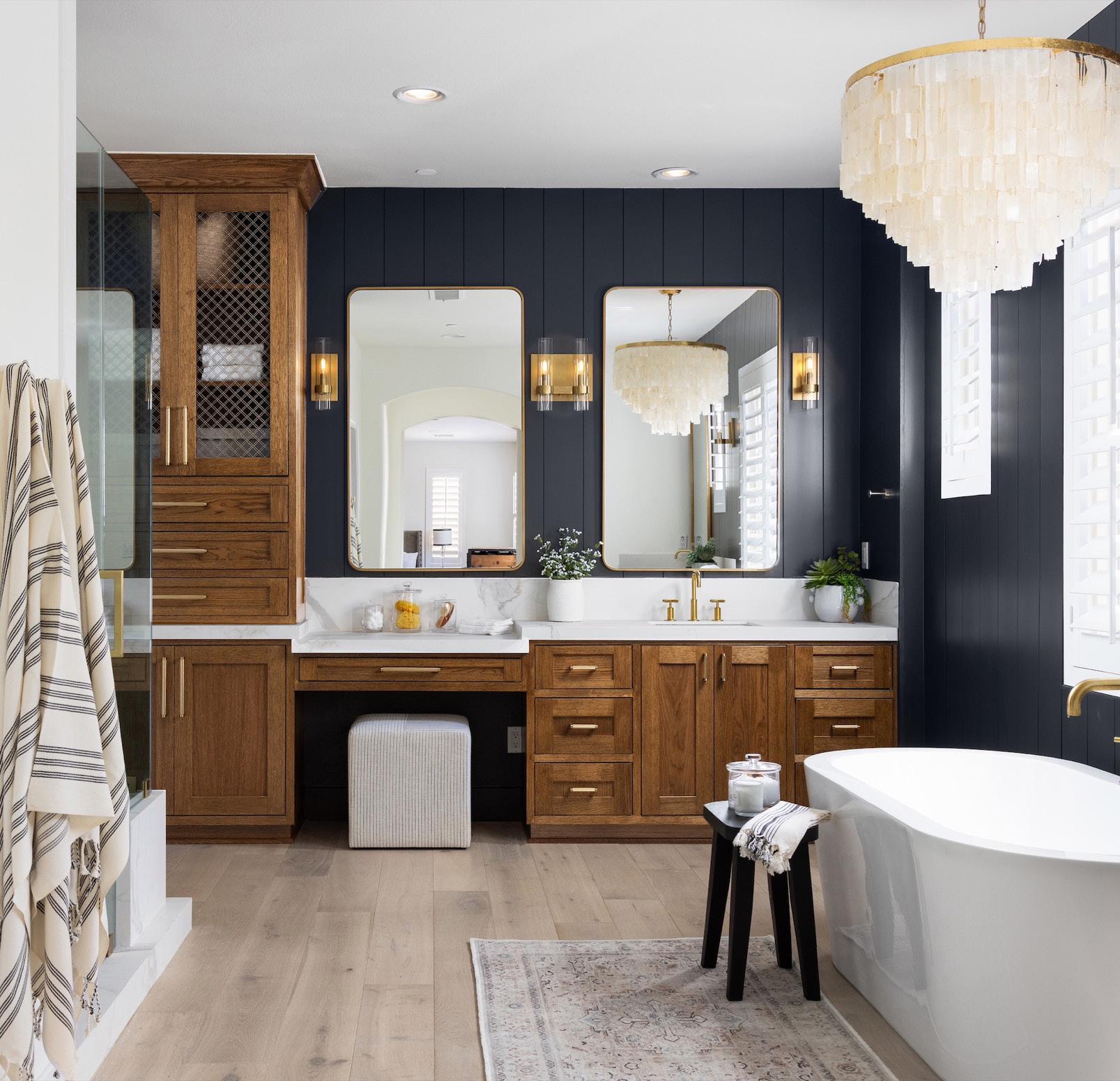

“A lot of times, when we see trends are changing, we try to keep up and stay within those trends, but also still remain true to our brand,” Miller said.
She also mentioned her own prediction for the fall.
“As the summer’s basically drawing near an end, there’ll be more ... neutrals, browns, beiges, black, brass, champagne, greens, blues,” Miller continued. “That’s kind of what we’re seeing as we move forward.”
The level to which people doing their own designs incorporate trends often revolves around the type of refresh they envision, according to Miller, as smaller projects may require swapping out a throw pillow or artwork.
“If you’re doing it more with construction, they can paint their cabinetry, change out their countertops,” she said. “It just really depends on what (people) want to accomplish.”
What helps Miller achieve her and her clients’ goals during the design process is the connectivity between designers like her and industry vendors, who stay up to date on what’s popular through trade shows and other events.
“Whether they’re an online retailer or they have a showroom, they’ll pull those types of (trending) materials in,” said Miller. “If not, they’ll work closely with us. If there’s something that we would love to have them (put on) their showroom floors, though, they’re happy to do that.”
Even as Belteau follows the trends to determine what to place in her clients’ spaces, she’s always tried to do the opposite in her own home.
Belteau prefers more timeless concepts and designs, which has led her to use more neutral colors.
“I’ll change out textiles, throws, pillow covers; maybe I’ll switch out some art here and there,” she said. “But I try to keep the bigger pieces like your sofas or dressers or console tables pretty neutral, so I can just swap out the décor from season to season.”
Trends can fall out of style or switch in as little as six months, Belteau noted, making the task of even trying to keep up with them tiresome.
She advises people to invest in larger pieces of furniture as a more sustainable way to design long-term, a practice she also follows when clients request merely a “refresh” of their desired space.
“I swap out the smaller pieces, which, one, are usually less expensive and budget-friendly, and two, you can save them for future years and reuse them throughout the seasons,” Belteau said.
danapointtimes.com Dana Point Times August 25-31, 2023 Page 7
Two local interior designers give their insights on what will be in vogue as the fall season approaches. Photo: Courtesy of Shannon Dunbar/Driftwood Designs





danapointtimes.com Dana Point Times August 25-31, 2023 Page 8 SMART TIMERS AT LOWE’S! Free
San Clemente
Rancho Santa Margarita SMWD.com/Events
September 7 1 - 6 PM
September 8 1 - 6 PM Learn more at Onsite Rebate Application Assistance at the SMWD booth! Orbit B-Hyve, Rachio 3, and Rain Bird timers available
Smart Timer Rebate Amount Up To $200 *Free after rebate on select timers, excludes taxes and installation* *
Lowe’s
Lowe’s
Thursday,
Friday,
SMWD
























